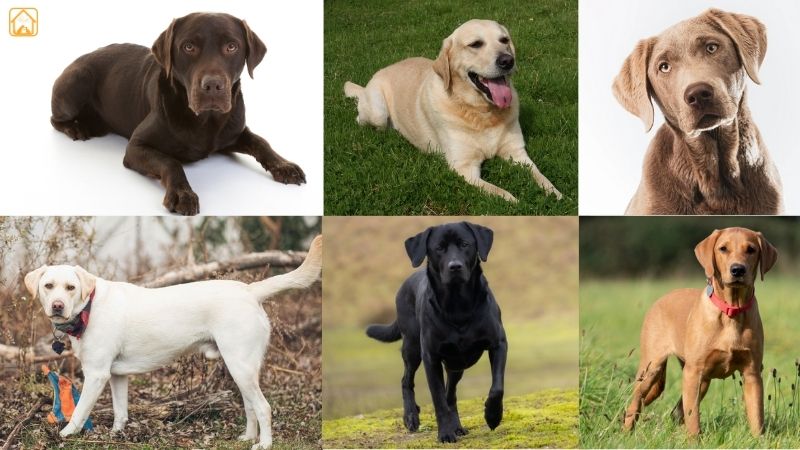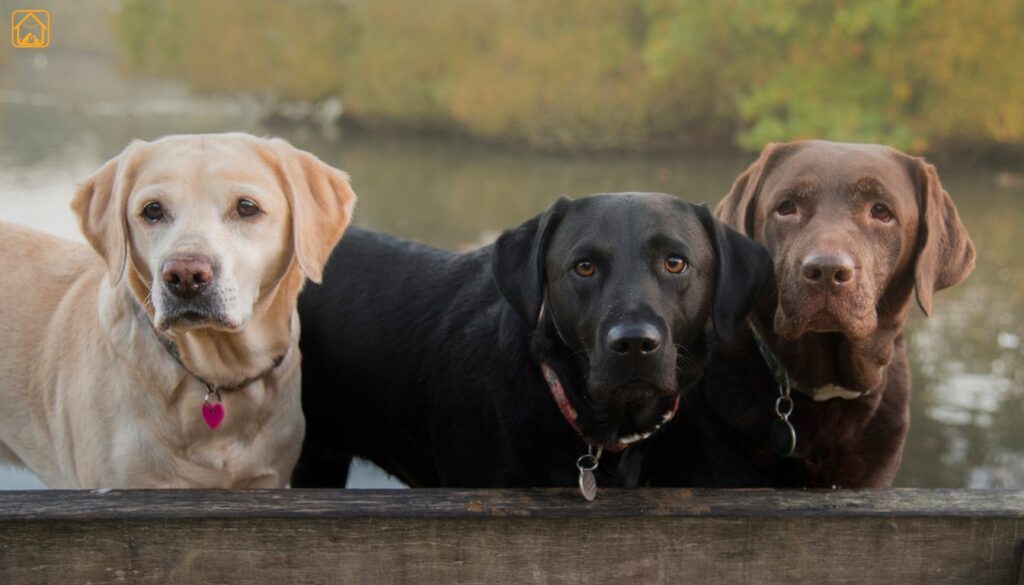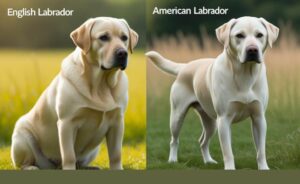Labrador Coat Colors Overview
Labradors aren’t just the world’s most popular dog for their friendly temperament, they’re also known for their variety of coat colors. The three main recognized labrador coat colors are black, yellow, and chocolate. But within those, there’s a surprising range of shades and even some rare colors that spark debate among dog lovers.
Each coat color has its own unique charm. Black Labradors are classic and sleek. Yellow Labs can range from pale cream to deep fox-red. Chocolate Labs bring a rich, warm tone. Occasionally, you’ll spot a silver, charcoal, or even white Labrador, which often get tongues wagging about genetics and breed standards.
- Black: Most common, traditional, and often seen in working lines.
- Yellow: From cream to fox-red, super versatile and family-friendly.
- Chocolate: Luscious brown, a bit rarer than yellow or black.
Ever met a silver Lab at the dog park? You’re not alone if you did a double take!
Official Labrador Coat Colors
Colors Recognized by AKC & Kennel Clubs
According to major kennel clubs like the American Kennel Club (AKC) and The Kennel Club (UK), the three official labrador retriever coat colors are:
- Black Labrador: Solid black, sometimes with a small white patch on the chest or toes. Black Labs are often chosen for guide and service work due to their trainability.
- Yellow Labrador: Can range from pale cream to deep fox-red. The AKC lumps everything from white to red under “yellow,” but you’ll find plenty of shade variation. Some yellow Labs have darker ears or a slightly different shade on the tail.
- Chocolate Labrador: Deep brown, from light to dark. Their eyes are typically hazel or brown, and their noses match their coat pigment. Chocolate Labs are a favorite in both pet and field lines.
Breed Standard Notes
- Eye Color: Should be brown or hazel in yellows and chocolates, brown in blacks.
- Nose Color: Black on black and yellow Labs (though yellows can have fading), brown on chocolates.
These official colors are celebrated for their beauty and versatility. But there’s a whole world of “unofficial” shades, too.
Rare and Unusual Labrador Colors

Beyond the Breed Standard
Some Labradors sport colors you won’t see in the show ring, but they’re still Labrador at heart. These include:
- Silver Labrador: A striking silvery-grey, technically a diluted chocolate. The “silver labrador” stirs debate; some breeders and experts argue they’re not purebred, while others stand by their lineage.
- Charcoal Labrador: Diluted black, giving a smoky, greyish-black coat. Charcoal Labs are rare and eye-catching.
- Champagne Labrador: A pale, diluted yellow. Sometimes called “champagne” for their light, almost sparkling shade.
- Fox Red Labrador: The deepest shade of yellow, vibrant and bold. Fox Reds are recognized as part of the yellow spectrum but are less common.
- Dudley Labrador: Yellow Labs with a pink nose and light eyes, caused by unique genetics. Not favored in the show ring, but perfectly lovable at home.
- White Labrador: Very pale yellow or, rarely, true albino. True albino Labs are extremely rare and often have health issues.
You know what’s funny? I once met a silver Lab named Smokey who stole the show at every dog park meetup. People would ask if he was a Weimaraner mix, but he had that classic Lab personality, goofy, loving, a total fetch fanatic.
Labrador Coat Colors Chart with Names & Visuals
It’s one thing to read about labrador coat colors, but seeing them side by side makes all the difference. Here’s a handy labrador coat colors chart featuring both official and rare shades.
| Color Name | Description | AKC Status |
| Black | Solid black, classic look | Official |
| Yellow | Pale cream to deep fox red | Official |
| Chocolate | Rich brown, light to dark | Official |
| Silver | Light grey, “diluted” chocolate | Not recognized |
| Charcoal | Smoky, diluted black | Not recognized |
| Champagne | Very light, pale yellow | Not recognized |
| Fox Red | Darkest shade of yellow | Recognized as yellow |
| White | Very pale yellow or albino | Not recognized |
Keep in mind, some Labradors have small white markings or lighter/darker points, but purebred Labs should not have large patches or patterns.
Labrador Coat Color Genetics and Inheritance
The Science Behind Labrador Colors
If you love a good genetics puzzle, Labradors don’t disappoint. Coat colour in labrador dogs is controlled by two different genes, and how they interact is the secret behind all those shades.
- B Locus (TYRP1 gene): Controls black (B) and chocolate (b). Black is dominant, so a Lab only needs one black allele to be black; both must be chocolate (bb) for a chocolate Lab.
- E Locus (MC1R gene): Controls yellow (e) versus non-yellow (E). Yellow is recessive, so two yellow alleles (ee) are needed for a yellow Lab. If a Lab has at least one E, the B locus decides if they’re black or chocolate.
That’s why you can have black parents produce yellow or chocolate puppies and vice versa! The interaction of these genes is called labrador coat color epistasis, where one gene can mask or alter the expression of another.
Punnett Square Example
Let’s say you have two Labs: one black carrying yellow (BbEe) and one chocolate carrying yellow (bbEe). The possible puppy colors?
- Black
- Chocolate
- Yellow
It’s a genetic lottery! That’s why mixed litters are so common.
Color Inheritance Table
| Parent 1 | Parent 2 | Puppy Colors Possible |
| Black (BBEE) | Black (BBEE) | Black only |
| Black (BbEe) | Chocolate (bbEe) | Black, Chocolate, Yellow |
| Yellow (ee) | Black (BBEe) | Black, Yellow |
Impact of Labrador Coat Colors on Health and Temperament
Does coat color affect your Lab’s health or personality? The short answer: not much, with a few exceptions. Most studies, including those from veterinary schools, show no direct link between color and temperament. All Labs, black, yellow, chocolate, or rare, can be loving, playful, and smart.
- Some research suggests chocolate Labs may be slightly more prone to ear infections and skin issues, but environment and breeding practices matter most.
- Albino and dilute (silver, champagne) Labs may have more light sensitivity or skin issues.
Some believe silver Labs are not “true” Labradors, while others just love their unique look. The real concern is health: certain genes linked to rare colors may increase risks like color dilution alopecia (patchy fur, skin issues) or higher rates of ear and eye problems.
Another myth is that color alone causes behavior issues. In reality, health and temperament depend more on breeding practices than shade. Always choose a reputable breeder who screens for common Lab health problems, regardless of color.
Bottom line: Choose a healthy, well-bred Lab from a reputable source, not just by color.
Before bringing home a Lab or if you already have one make sure you’re aware of the breed’s health risks. Our article on Labrador Retriever health issues has everything you need to know.
Choosing a Labrador: What Does Coat Color Mean?
When picking your future companion, it’s easy to get caught up in color. But here’s the real deal: labrador coat colors don’t determine personality, intelligence, or love. Focus on health, temperament, and reputable breeders or rescues.
- Meet the parents if possible, see their temperament in action.
- Ask about health screenings and genetics.
- If adopting, don’t overlook black or adult Labs, they’re often the last to leave shelters.
Trust me, the “best” Labrador is the one that fits your family, not just your favorite color.
Frequently Asked Questions (FAQs)
What are the main Labrador coat colors?
The main labrador retriever colors are black, yellow, and chocolate, as recognized by major kennel clubs. Each has a range of shades, especially yellow Labs, which can go from pale cream to fox-red.
Are silver Labradors purebred?
The “silver labrador” is controversial. Officially, silver is not an accepted color in the AKC breed standard and is considered a diluted chocolate. Some breeders claim they’re purebred, but others disagree. DNA testing and lineage records are the only way to be sure.
How many Labrador colors are there?
Officially, there are three: black, yellow, and chocolate. However, with rare shades like silver, charcoal, champagne, fox red, and white, you’ll see more than three in real life. The labrador color chart can help you identify them all.
Can two yellow Labradors have black puppies?
No, two yellow Labs (both with ee genes) can only have yellow puppies because they don’t carry the gene for black or chocolate in their coat.
Does coat color affect a Labrador’s personality?
There’s no scientific evidence that coat color affects temperament. All Labs are known for being friendly, intelligent, and eager to please, regardless of shade.
What is a Dudley Labrador?
A Dudley Labrador is a yellow Lab with a pink nose and pale eyes, caused by specific genetics. They’re not common and aren’t favored in the show ring, but they’re just as healthy and loving as any other Lab.
How do I know what type of coat my Labrador has?
All Labradors have a short, dense double coat that repels water. There aren’t different “types” of coat in purebred Labs, though some may have slightly wavier or softer fur. If you’re unsure, ask your vet or breeder.
References and Further Reading
- UC Davis: Coat Color Inheritance in the Labrador Retriever
- Coats and Colors: Labrador Retriever Color Chart
- AKC: Labrador Retriever Breed Standard
Conclusion
In this article, we will cover all the different labrador coat colors available in the world. Labrador colors add even more charm to an already amazing breed. From the classic black, yellow, and chocolate to the rarer silver and red, each coat tells a story but personality always shines brighter than color. No matter the shade, every Labrador brings love, loyalty, and joy to their family.



